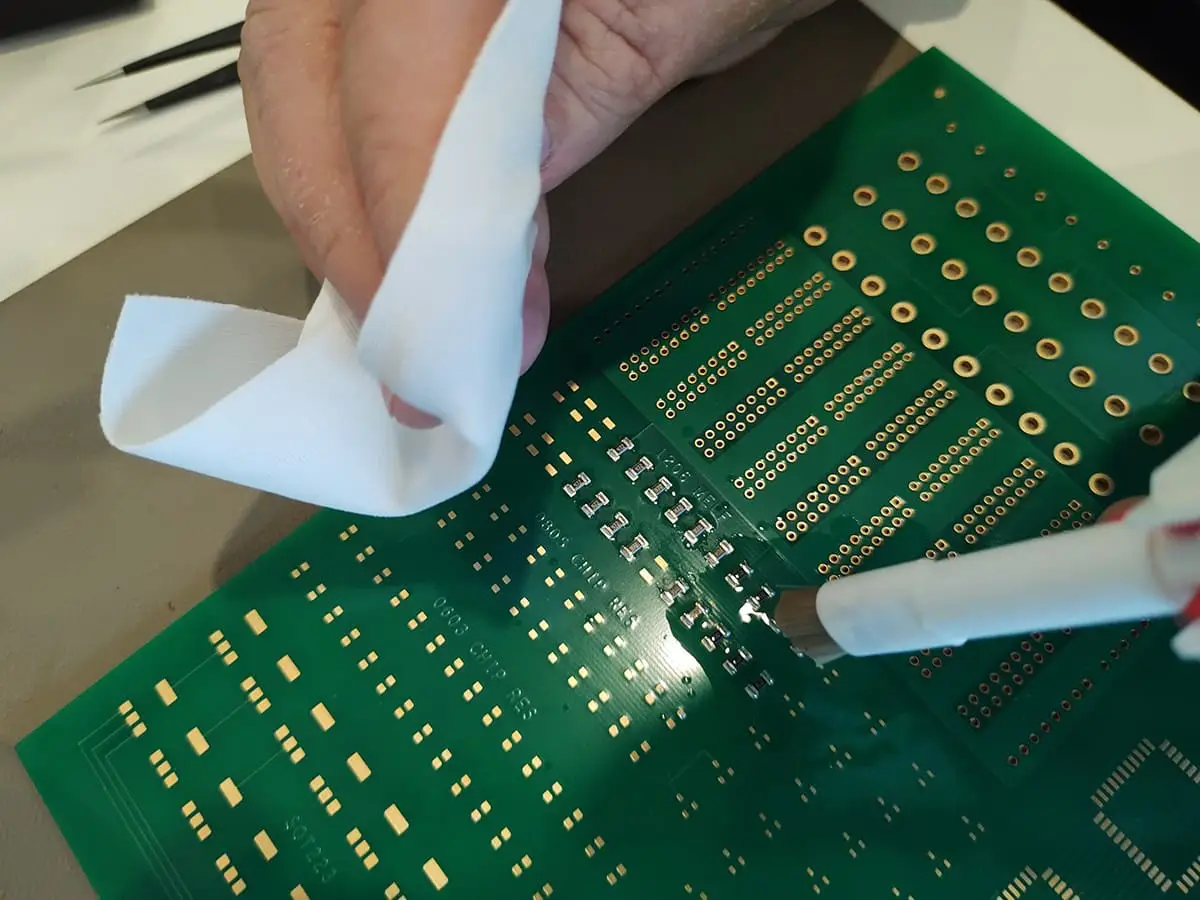Why do you need to clean a PCB after soldering?
 The flux residues that remain on the circuit board can cause short circuits. The picture shows what happens if you don’t clean. This is a defect for all classes per IPC-A-610 and J-STD-001 standard. This PCB was soldered by hand with so-called “No-Clean Flux”. The name No-Clean Flux actually means that you don’t have to clean after soldering … .. but why can there be a short circuit? If you apply too much Flux and you don’t heat long enough, the unheated (No-Clean) flux residues may cause a short circuit afterwards. This usually happens at high humidity. Professionals are talking about “dendritic growth” or “electromigration”, just call it dendrites. Why do they call this flux “No-Clean Flux” when the flux residues can cause a short circuit? No-Clean flux is actually intended for machine soldering (wave soldering / reflow soldering / selective soldering). The correct amount of flux is applied in the machine. If the entire circuit board is then heated, all flux residues are “No-Clean”, so you don’t have to clean afterwards and you can save time and money. But this is difficult to control by hand soldering. One person heats slightly longer than the other person. This means that sometimes there may be a short circuit (afterwards) and that is why it is important that you clean properly. By which? The flux manufacturer knows exactly which type of flux has to be cleaned with which type of cleaning agent. Usually cleaning is done with isopropanol (IPA). In the IPC-J-STD-001 you will find the maximum contamination that may remain on the circuit board. More information about flux can be found in IPC-J-STD-004. In the IPC-TM-650 you will find the methods for measuring residues. The cleaning action itself is explained in the IPC-7711/7721.
The flux residues that remain on the circuit board can cause short circuits. The picture shows what happens if you don’t clean. This is a defect for all classes per IPC-A-610 and J-STD-001 standard. This PCB was soldered by hand with so-called “No-Clean Flux”. The name No-Clean Flux actually means that you don’t have to clean after soldering … .. but why can there be a short circuit? If you apply too much Flux and you don’t heat long enough, the unheated (No-Clean) flux residues may cause a short circuit afterwards. This usually happens at high humidity. Professionals are talking about “dendritic growth” or “electromigration”, just call it dendrites. Why do they call this flux “No-Clean Flux” when the flux residues can cause a short circuit? No-Clean flux is actually intended for machine soldering (wave soldering / reflow soldering / selective soldering). The correct amount of flux is applied in the machine. If the entire circuit board is then heated, all flux residues are “No-Clean”, so you don’t have to clean afterwards and you can save time and money. But this is difficult to control by hand soldering. One person heats slightly longer than the other person. This means that sometimes there may be a short circuit (afterwards) and that is why it is important that you clean properly. By which? The flux manufacturer knows exactly which type of flux has to be cleaned with which type of cleaning agent. Usually cleaning is done with isopropanol (IPA). In the IPC-J-STD-001 you will find the maximum contamination that may remain on the circuit board. More information about flux can be found in IPC-J-STD-004. In the IPC-TM-650 you will find the methods for measuring residues. The cleaning action itself is explained in the IPC-7711/7721.






